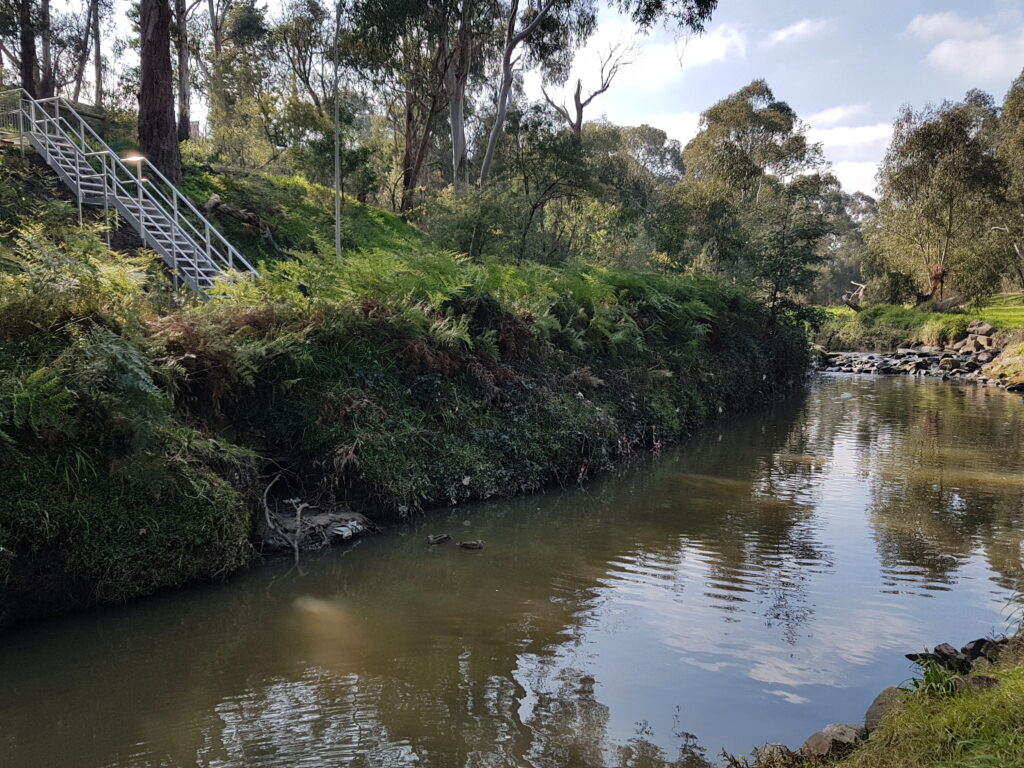In Brisbane on the 27th May 2026 at 12.15pm?
Come and listen to Andy Chan (Melbourne Water Corporation) and Stephen D’Agata (Urban Water Solutions) as they discuss why integrated modelling is necessary to understand the interaction between separate sewerage and stormwater systems.
Combined models of Melbourne’s sewerage and stormwater networks were simulated with design rainfall events (ARR2019 18.1% AEP rainfall intensities and profiles) to provide a clearer picture of how these networks interact during rainfall events. The sewerage system includes emergency relief structures (ERS) that allow sewage to overflow into the stormwater system to protect customers and assets. The picture below shows an ERS at the base of the ladder and the Dandenong Creek at normal flow level.

The figure below is an example of where elevated levels in the stormwater/drainage system (shown on the right) prevent the sewerage ERS from operating. This results in higher surcharge levels in the sewerage network that would be expected, but less overflow to the receiving environment.

Ozwater is an annual three-day conference and exhibition featuring a strong line-up of international and national keynote speakers, scientific and technical papers, case studies, workshops, panel sessions, and poster presentations.
To discover other interesting presentations, please use the link to access the latest Ozwater Program.



